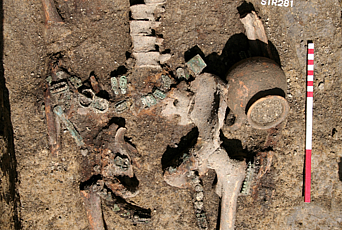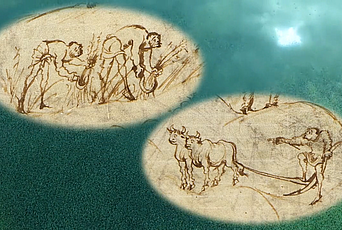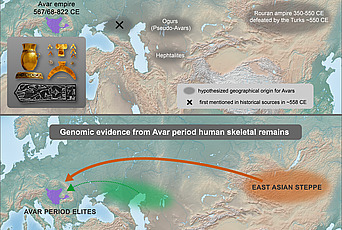Early Medieval Community Dynamics Revealed in Ancient DNA Study
Press Contact
A new study of ancient DNA by a team of international researchers, including Patrick Geary, Professor Emeritus in the Institute for Advanced Study’s School of Historical Studies, provides insight into the development of and social structures within European rural communities following the fall of the Roman Empire. Some of these communities, about the formation of which little was previously known, would eventually become the basis for many modern European countries.
The findings, published in a paper in the Proceedings of the National Academy of Sciences (PNAS), suggest that early medieval elites, or those of higher social status, were initially made up of multiple families with distinct genetic ancestries. But over time, they evolved into a single extended lineage spanning at least five generations. Importantly, the study suggests that these families also intermarried and became integrated with genetically diverse newcomers from a variety of social and cultural backgrounds.
These conclusions were drawn with particular reference to a community that used a cemetery in Collegno, Italy, as a burial site during the sixth to eighth centuries C.E. The research team combined paleogenomic, archaeological, and isotopic data from the cemetery to analyze this community. The genomes of 28 individuals from the cemetery were sequenced and analyzed, and the study also incorporated data from 24 previously published genomes. Researchers not only studied individuals’ social mobility but also their burial patterns and diet.
“In 2018, our team published a paper that demonstrated genomic and cultural similarities between Collegno and Szólád, a village in modern Hungary that showed a significant correspondence between individuals with a northern European ancestry in both,” stated Geary. “Our new study follows the transformation of the Italian community over a century, and shows how new groups moved into and merged with the existing inhabitants.”
The findings indicate that while a majority of individuals from the Collegno community came from northern Europe, the community later incorporated individuals from other origins and genetic backgrounds into it, including surrounding locals.
Despite this genetic diversity among the Collegno group, Geary and his colleagues believe that individuals whose lineage stemmed from the elite families who initially established the population went on to hold a higher ranking in society. These conclusions were based on the richer diets that these individuals enjoyed and the heavily detailed—and likely more expensively made—items they were buried with, such as weapons and elaborate belts.
For the co-PI of the project, Associate Professor Krishna Veeramah of Stony Brook University, as well as lead authors Yijie Tian of Stony Brook, István Koncz of Eötvös Loránd University, and Sarah Defant of the Free University of Berlin, this research demonstrates the value of collaboration between scientists and humanists to understand the past.
About the Institute
The Institute for Advanced Study has served as one of the leading independent centers for theoretical research and intellectual inquiry since its establishment in 1930, advancing the frontiers of knowledge across the sciences and humanities. From founding IAS Faculty Albert Einstein, Erwin Panofsky, and John von Neumann to influential figures Emmy Noether, George Kennan, and J. Robert Oppenheimer to the foremost thinkers of the present, IAS is dedicated to enabling independent inquiry and fundamental discovery.
Each year, the Institute welcomes more than 250 of the world’s most promising post-doctoral researchers and scholars who are selected and mentored by a permanent Faculty, all of whom are preeminent leaders in their fields. Among present and past Faculty and Members, there have been 35 Nobel Laureates, 44 of the 62 Fields Medalists, and 23 of the 27 Abel Prize Laureates, as well as winners of the Turing Award; the Pulitzer Prize in History; the Wolf, Holberg, and Kluge prizes; and many MacArthur and Guggenheim fellows, among other honors.


